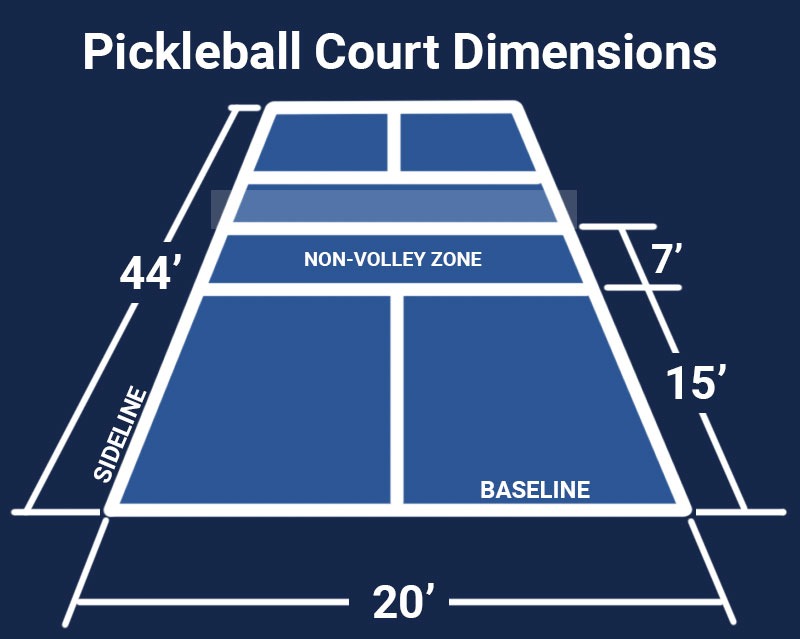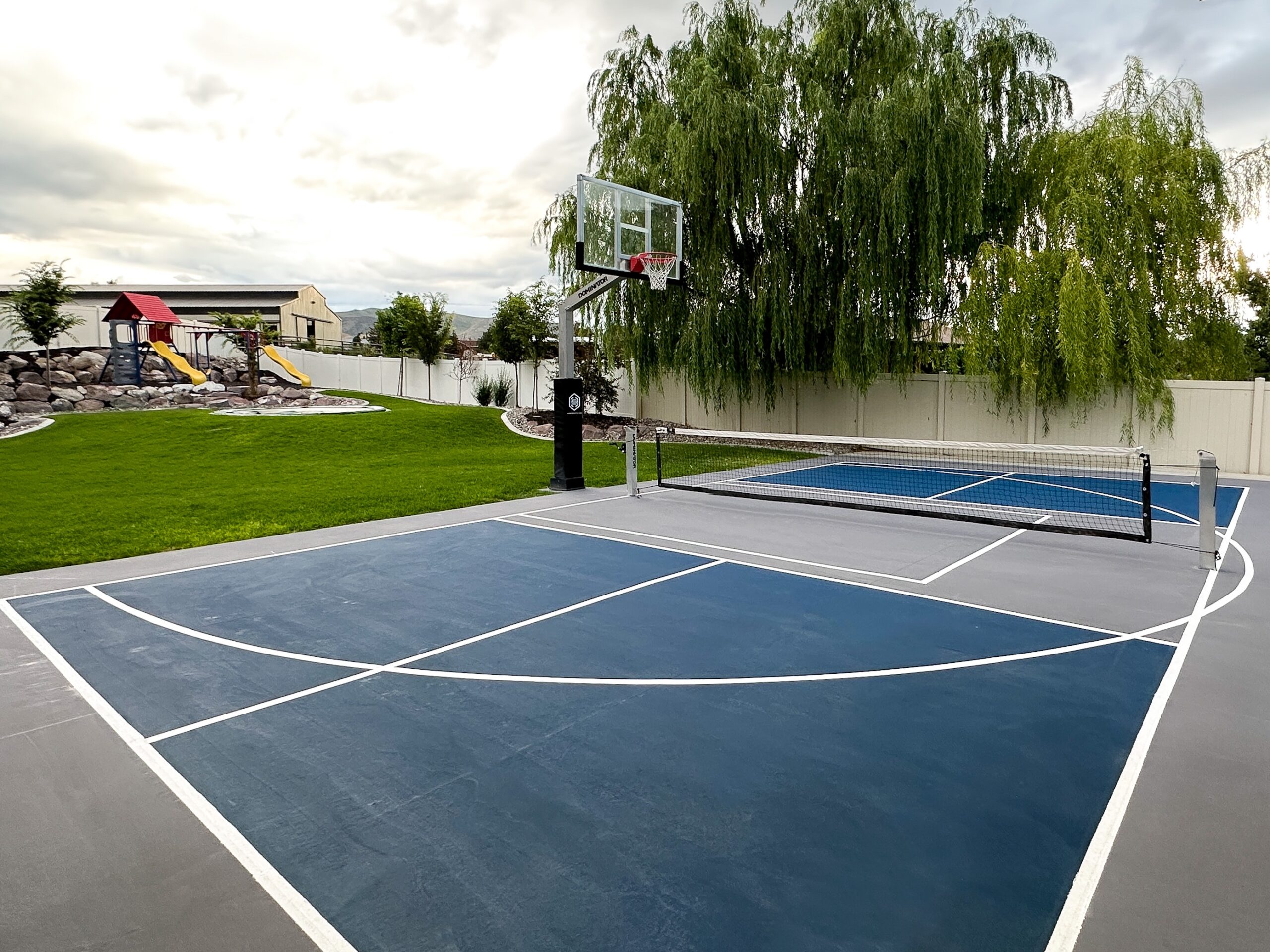Secret Consider the Building And Construction of Pickleball Courts: From Site Option to Final Coatings
The building and construction of pickleball courts includes a series of critical variables, beginning with the option of a suitable site that balances accessibility with environmental factors to consider. Vital components such as court dimensions, surface materials, and drainage systems significantly affect not only the quality of play however likewise the long life of the center. Moreover, attention to lighting and ending up touches can raise the general experience for players and viewers alike. Understanding exactly how each of these components interrelates may expose understandings that are commonly ignored, motivating a closer evaluation of ideal methods in court construction.
Site Option Standards
When beginning on the construction of pickleball courts, it is vital to nail down the website selection requirements that will ensure ideal playability and accessibility. The location has to be conveniently reachable for gamers, ideally positioned near suburbs or recreation center, to urge engagement.
Additionally, the terrain must be level and secure, as unequal ground can bring about security dangers and affect gameplay. Appropriate drainage is likewise critical; selecting a website with great water runoff will certainly help maintain court problems during unfavorable weather condition.
One more vital consideration is the accessibility of energies. Access to power and water is needed for illumination and maintenance purposes. Additionally, proximity to vehicle parking centers is important, assisting in simple access for players and viewers alike.
Ecological elements can not be neglected; all-natural color from trees can enhance gamer convenience, while exposure to prevailing winds might interfere with play. Finally, zoning policies and community support ought to be considered to make sure that the task lines up with regional guidelines and receives the support it requires for successful execution. By carefully evaluating these criteria, stakeholders can develop a welcoming and practical setting for pickleball enthusiasts.
Court Capacities and Layout
To guarantee ideal gameplay and adherence to regulations, the dimensions and layout of pickleball courts have to be thoroughly defined. A typical pickleball court measures 20 feet in width and 44 feet in size for both songs and doubles play. The recommended design includes a non-volley zone, commonly described as the "kitchen," expanding 7 feet from the web on either side. This area is important, as it affects player positioning and shot selection - Illinois and midwest.
The net height is established at 36 inches at the sidelines and 34 inches at the center, developing a slight dip that influences ball trajectory. Court markings are equally find out here now important; lines need to be 2 inches large and distinctive in shade to guarantee presence.
Furthermore, a buffer area bordering the court is advisable, normally expanding 5 to 10 feet past the sidelines and baselines to accommodate players' motions and boost safety and security. Proper format and measurements not just guarantee conformity with official laws yet likewise enhance the overall playing experience, suiting both entertainment and competitive play. Mindful preparation in these areas is extremely important to the successful construction of pickleball courts.
Surface Product Options
Picking the ideal surface area product for pickleball courts is crucial for making sure ideal player efficiency and security. The selection of surface area can significantly influence gameplay, including sphere bounce, traction, and player comfort.
There are a number of options available, each with its unique attributes. Asphalt is a prominent selection due to its longevity and low maintenance needs. It gives a solid having fun surface area that can endure various weather condition conditions yet might need routine resurfacing.
Concrete is visit our website another commonly utilized material, using superb durability and a smooth coating. It permits consistent round bounce but can be difficult on gamers' joints, making it less preferable for lasting play without correct padding.
For those seeking enhanced comfort and shock absorption, cushioned acrylic surfaces offer a practical alternative. These surfaces incorporate a base layer with an acrylic topcoat, giving boosted grip and a softer feel, which is advantageous for reducing the danger of injuries.
Lastly, synthetic turf is gaining grip, especially for multi-purpose centers. Its adaptability and reduced maintenance needs make it an attractive alternative, though it might not offer the exact same round action as traditional difficult courts. Careful factor to consider of these options will certainly make certain an optimum playing atmosphere.
Drainage and Lighting Factors To Consider
Proper drainage and effective lights are important elements in the building of pickleball courts, significantly affecting both playability and safety. Sufficient drain systems protect against water accumulation, which can lead to unsafe surfaces and damages to the court framework. A well-designed drainage plan integrates sloped surface areas and ideal products to promote water flow far from the playing area - Illinois and midwest. This not just maintains the stability of the court but likewise minimizes downtime as a result of poor weather.
Lighting is just as essential, especially for courts meant for evening usage. The positioning of illumination fixtures ought to be strategically intended to eliminate shadows and provide even circulation of light throughout the court.

Final Surfaces and Maintenance
After resolving drain and lighting factors to consider, attention turns you can try these out to the last coatings and ongoing upkeep of pickleball courts. Usual choices include acrylic coverings and specialized sports surfaces that offer ideal grip and cushioning.

Seasonal maintenance might include resurfacing every few years, depending on use and ecological variables. Effectively preserving webs, court lines, and bordering areas is similarly essential to supply a safe and enjoyable playing experience. By spending in top quality finishes and sticking to a structured upkeep timetable, center owners can guarantee their pickleball courts stay in superb condition for years to come.
Conclusion
In conclusion, the successful building and construction of pickleball courts pivots on precise interest to numerous vital aspects. Top quality surfaces and a durable upkeep timetable are important for preserving the court's condition, boosting the total experience for players and viewers alike.